Last-Minute NYC Holiday Gift Guide 🎁
We’ve created a holiday gift guide with presents for the intrepid New Yorker that should arrive just in time—


I used to pretend that I knew a little about wines. At a restaurant, when a server brought me a bottle and held it label-forward for my approval, then poured a taste, I’d sip, trying to seem easy about it. I’d then nod knowledgeably as if mildly pleased, indicating he should fill my glass. Once I did that with my husband. But after passing the glass to him for a taste, he paused, sniffed and sipped, then handed it back to the server to take away. It was corked. Corked means that the wine is compromised, that it’s either entirely tainted or certain characteristics are choked. Smell and flavor are not what they should be. Now I let him taste first, and I don’t pretend.
Instead, I’ve embarked on a journey to educate myself. And because Austria is right next door to Hungary (which is where my husband and I live), we traveled there for five days to begin my lessons. Although not as well known for their wines as France or Italy, or even California, winemaking in Austria is serious business. It’s a cultural staple. Indeed, Aldo Sohm, the top sommelier in the world, is Austrian. There’s not one region of the country without sprawling vineyards; every town, small or large, has a vinothek. Austria is often culturally lumped together with Germany, perhaps because it’s a neighboring, German-speaking country. Everyone thinks Austrians are German, or as I’ve often heard in the U.S., “What’s the difference?” For starters, the Germans, although not ignorant about wine, live in a predominantly beer culture.
We began at Winequartier, a vinothek in Retz, Weinviertel, the country’s region best known for the world-famous Austrian white grape, Grüner Veltliner. Wine Monger (www.winemonger.com) describes wines made from this varietal as crisp, light-to-medium bodied, and dry with an edge of spice. “It can have mineral, herbal, floral, and even fresh pea or lentil notes, and it’s known for having a slight white-pepper taste on the finish.”
Our first day was a success. We tasted nearly forty-five wines from the area. The development of my palate is just beginning, but by the end of the first day, the whites yielded grapefruit, papaya and citrus tones on the nose, the reds cherry, berries, and even leather. Each glass was beginning to smell individual, although the tastes were still a little difficult to distinguish. I’m understanding better—or rather, my senses are—that the balance of acidity, minerals, tannins, body, texture, sugar content and finish is key when determining a wine of good quality. The only way to learn this balance is to continue tasting.
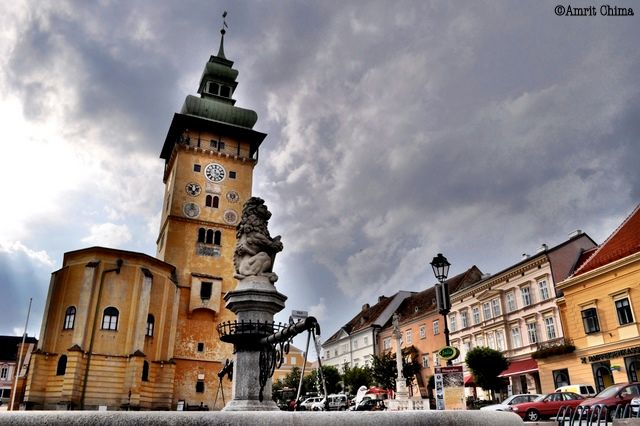 Retz town square. During the yearly wine festival here, wine flows from the fountains.
Retz town square. During the yearly wine festival here, wine flows from the fountains.
We tasted over forty wines at a vinothek in Deutschkreutz , Burgenland, the area famous for the Blaufränkisch grape. This varietal is spicy and tannic with good acidity. Next stop was Wagram, but unfortunately the local vinothek was closed on the day we drove nearly an hour west from Vienna for tasting. Wagram is best known for more full-bodied and aromatic Grüner Veltliners, as well as Roter Veltliners. I was hoping to try them, but instead we made our way back toward the capital, heading East beyond the city to Soo߸ (pronounced Sōse). Quite a number of winemakers’ pubs were also closed for the day here, but we did find a tasty Grüner Veltliner and Sauvignon Blanc at winemaker Johann Hecher’s establishment. His Grüner Veltliner was on the sweeter side, although sweet is not the correct descriptive terminology. Instead, it’s fruity. No wine, either red or white, should simply be sweet. Quality of a wine increases when the sugar content is balanced with acidity. Acidity tends to bring out more characteristics, like a touch of salt in food.
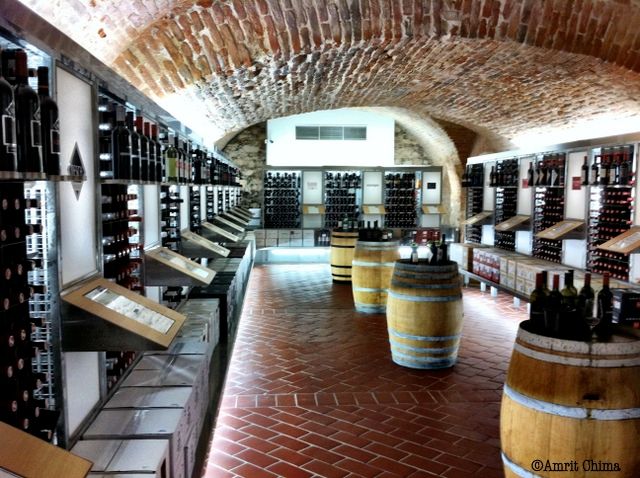 Vinothek Vinatrium Wine Cellar in Deutschkreutz, Austria
Vinothek Vinatrium Wine Cellar in Deutschkreutz, Austria
The best part about wine tasting in Austria is that it’s sometimes possible to visit the winemaker directly. This is a distinctly different experience than wine tasting in Napa, near my parents’ home in California. Private tastings are personal, and the senses are unhurried. In Langenlois, Kamptal we met Thomas Leithner, who invited us into his home. He’s a former string guitarist who still strums on occasion with his son, believes Bob Dylan is the godfather of guitar, is a whisky lover, and though he was not always certain about his future as a winemaker, eventually grew into a passionate and skilled one.
Born into a long ancestral line of winemakers and viticulturalists (his great-grandfather cross-bred Blaufränkisch with St. Laurent to create the Zweigelt grape, the most commonly grown grape in Austria today), Leithner knows his craft. It’s evident in his gestures, which are matter-of-fact while describing his wines. He knows quality and is confident that his are good. He pulls out various bottles and pours with such nonchalance that it’s hard to question this self-assuredness, even before taking a sip. It’s not hubris he’s full of. It’s knowledge passed down through five-hundred years of family tradition.
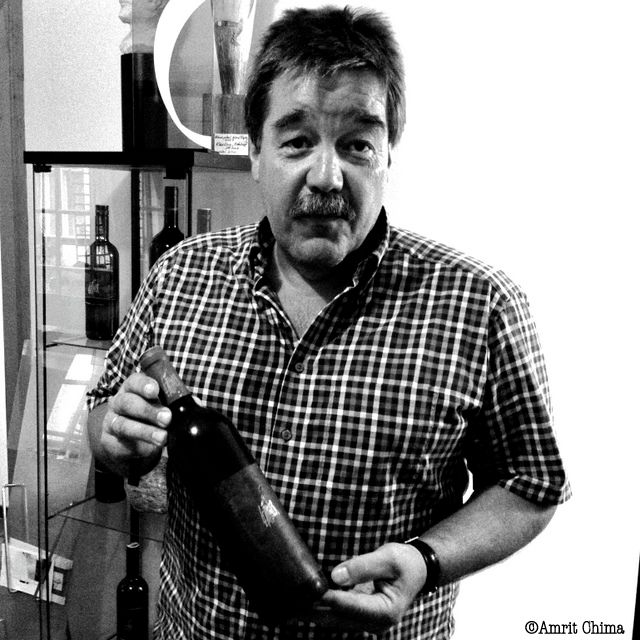 Weingut Thomas Leithner
Weingut Thomas Leithner
After tasting so many wines over the course of several days, my palate has begun to open up. I can tell now what he means when he says, “I make wines that I would like to drink.” These are wines for whisky-loving guitar players. As my husband put it, they’re mature and complex. I agree. I thought they were better than most I’d tried.
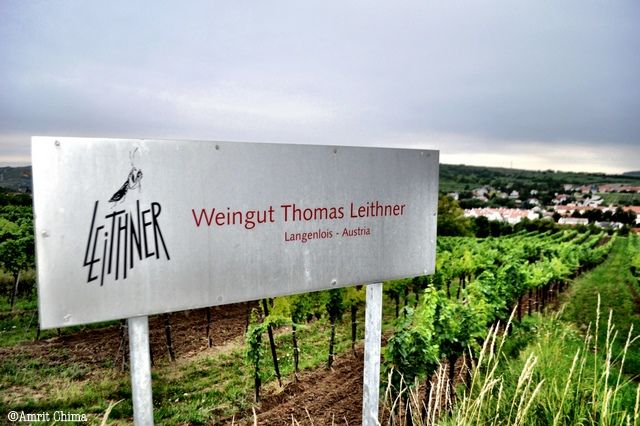 Weingut Thomas Leithner vineyards
Weingut Thomas Leithner vineyards
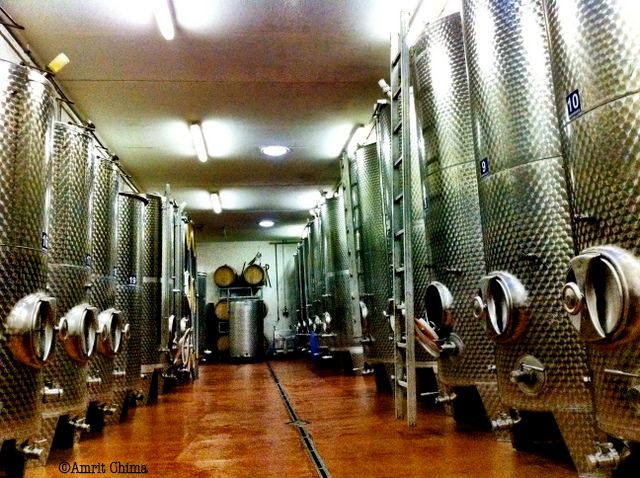 Thomas Leithner’s wines vats
Thomas Leithner’s wines vats
After a tour of his wine cellar, Leithner spontaneously picked up a fifteen-year-old bottle of Riesling and asked if we’d like to taste. The label was illegible after so much time underground, the bottle wet and coated in dirt, like a treasure pulled out from the cargo hold of a long-sunken ship. Something happens to a Riesling when it’s aged for so long. It loses its crispness in favor of a rounder, raisiny, more velvety quality.
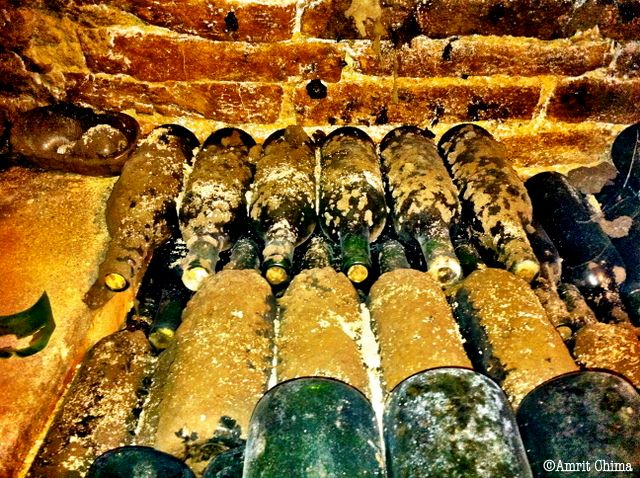 Thomas Leithner’s wine cellar
Thomas Leithner’s wine cellar
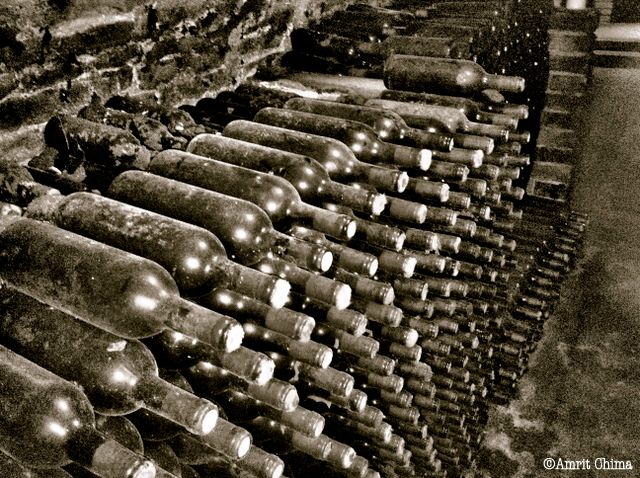 Thomas Leithner’s wine cellar
Thomas Leithner’s wine cellar
Another personal favorite from our tour was winemaker Johannes Reinisch, in Tattendorf, Thermenregion. Self-effacing would best describe Reinisch. He’s a gentleman, reserved and not much for words. He lets the wines speak for themselves. That’s also how he bottles them. Staying as close to nature as possible, his wines are organic, but he doesn’t tout this on the labels. Yet, like Leithner, he also knows he provides quality. Modest, yes, but with my husband shaking his head in admiration at every taste, it was hard for him not to nod somberly as if to say, “Yes, I know.” His wines don’t explode on the palate. They’re intense and beautiful, subtle and graceful, with the absolute right amount of everything, creating that balance for which we’d been searching.
Five days is certainly not a sufficient amount of time. Winemakers live and love their business, their fingers in the earth, the grape in their line of sight from harvest to barrel. Certified sommeliers study rigorously for years to hone their palates. One glimpse of the color, one sniff, one taste and they can tell the grape, the region, and the vintage. They know quality wines. I may not be so knowledgeable yet, but I’m on a quest to continue learning, and I’m much better now than I was a few days ago.
Next stop, Hungary.
Subscribe to our newsletter